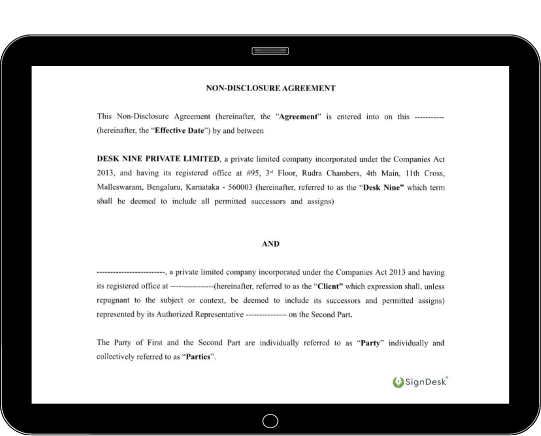What Is an NDA?
A Non-Disclosure Agreement, or NDA, is a legal contract to protect confidential information. By signing an
NDA, the parties involved agree not to share certain information with anyone else. NDAs can protect a wide
range of information, from trade secrets and business strategies to customer lists and marketing
plans.
In essence, an NDA is a formal agreement that says, “We trust each other with this
information, and we promise to keep it private.”















